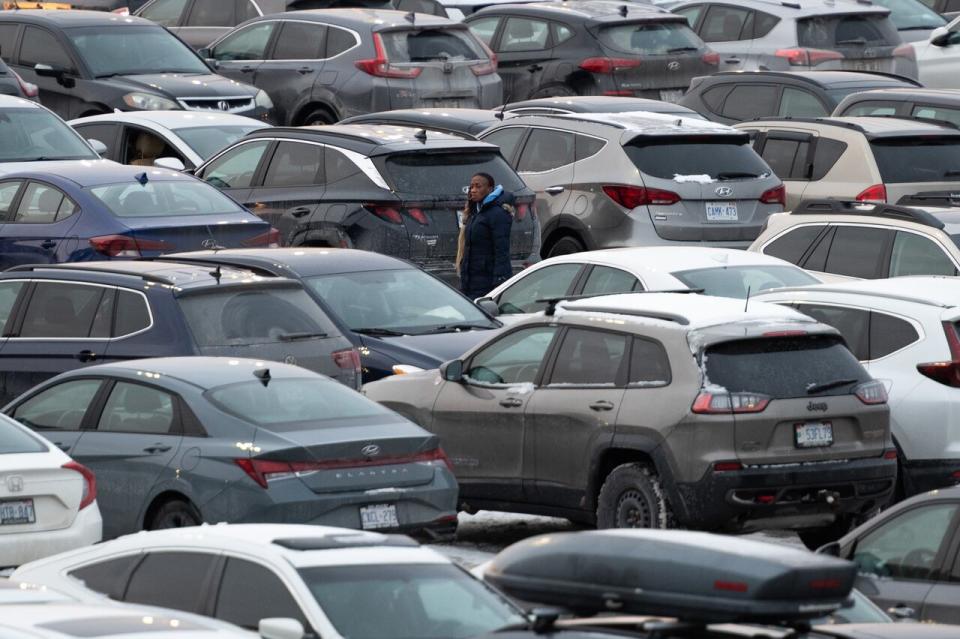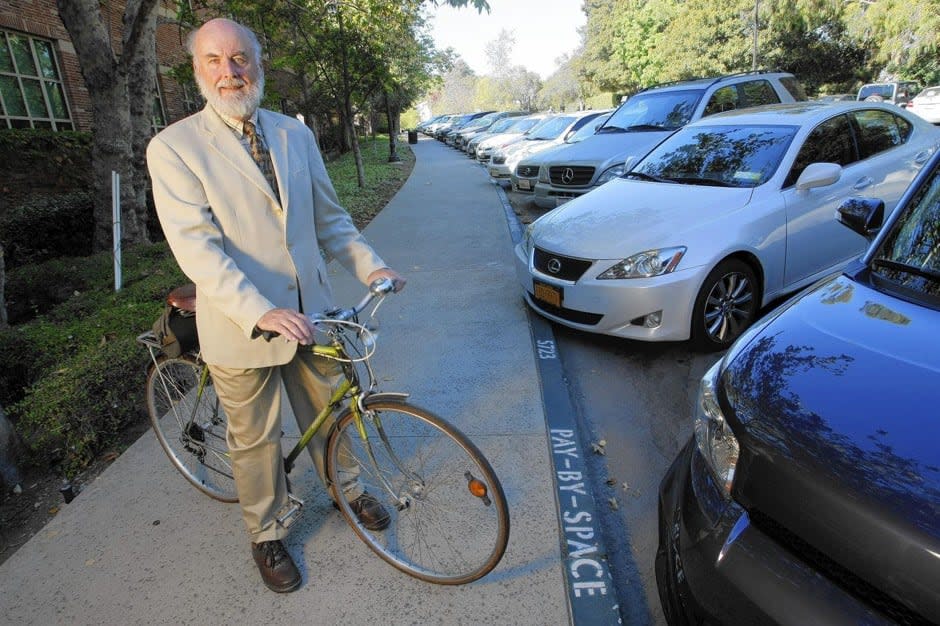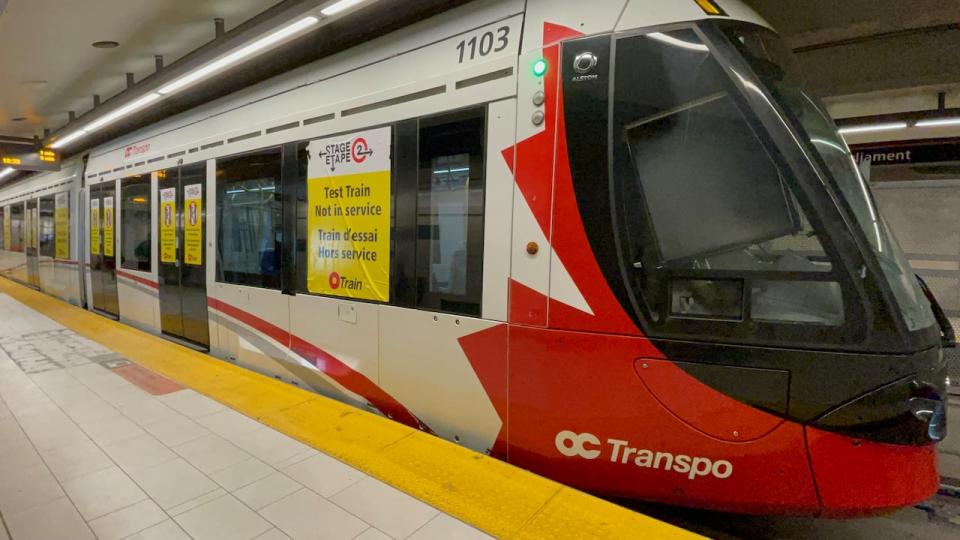Eliminating 'parking minimums' helped U.S. cities. Could it work here?

- Oops!Something went wrong.Please try again later.
The City of Ottawa is proposing a change it says should make housing more affordable, stimulate construction and help the environment — but drivers might not like the sound of it.
Transportation and planning experts argue that removing "parking minimums" — the number of parking spots that must be included in any new development — does all those things and more.
They said cities that have made the leap apparently experience none of the issues naysayers warned about.
"There was definitely some pushback and some fear," said Chris Hawley, a senior planner in Buffalo, N.Y., which became the first major city to take that step seven years ago.
"The sky did not fall and people can still get around."
Those fears included that major developments would be built without providing any new parking, plunging neighbourhood streets into daily chaos.
"Doomsday predictions" have not come to pass, Hawley said.
In fact, removing parking minimums spurred development rather than stifling it, he said.
"That was a pleasant surprise."

People walk in a sea of parked cars at a shopping mall on Boxing Day in Ottawa Dec. 26, 2022. (Spencer Colby/The Canadian Press)
More flexibility, not less
Since Buffalo made that move, dozens of other U.S. cities have followed suit.
North of the border, Edmonton, Calgary and Toronto are among the major cities to also go that direction, with experts saying the results appear similar regardless of where the decision was taken.
"The experience around the world on that issue is it actually liberates development," said Rachel Weinberger, director of research strategy at the Regional Plan Association in New York.
She said "the theory and the practice aligned" to show that getting rid of parking minimums promotes density and boosts the housing supply.
Buffalo and other cities noted an uptick in certain forms of development that parking minimums had made difficult, including low-rise infill projects and conversions, developments Ottawa is also aiming to foster.
Relaxing the rules revitalized historic Los Angeles office districts, said Donald Shoup, professor of urban planning at UCLA and author of The High Cost of Free Parking.
"There were wonderful buildings in terrible condition," he said. "As soon as the city removed the off-street parking requirements, 57 historic office buildings were converted into apartment buildings in the next eight years."

Donald Shoup is a professor of urban planning at the University of California, Los Angeles. He has an engineering and economics background. (UCLA)
Costs are passed on
One key point experts make about why relaxing parking minimums can spur development is that there are costs that come with adding spots — costs that can be high enough to stall progress.
That's noted, in fact, in a background document published by planners as part of Ottawa's comprehensive zoning bylaw review, one that hints at the sort of pushback the city is expecting if it takes that step.
The report cites research that pegs the cost of parking at $25,000 to $65,000 per spot, which is passed on by developers to businesses, homeowners and tenants — including those who don't have a vehicle.
Requiring parking along with housing can add "15 to 20 per cent" to the cost of construction, while also taking up a lot of space, Weinberger said.
For example, removing two parking spots can provide enough space for a smaller and more affordable studio apartment, which might not be economically feasible otherwise.

Experts say that removing expensive parking requirements has helped cities encourage the construction of new homes. (Patrick Doyle/Reuters)
"If you have a parking requirement of one space per apartment, that leads developers to build larger and more expensive apartments because enlarging apartments doesn't require more parking," Shoup said.
"It just makes complete sense."
The 'pseudo-science' behind minimums
These minimums can also lead to a glut of parking that's never used, argued Chris McCahill, managing director of the State Smart Transportation Initiative at the University of Wisconsin.
"A lot of that parking that's required by a city often goes to waste, and the cost of building it gets passed along to us whether we use the parking or not," said McCahill.
"We pay for it in the services and products that we buy. We pay for it in rent."

Chris McCahill is the managing director of the State Smart Transportation Initiative at the University of Wisconsin. (Submitted by Chris McCahill)
Cities also pay through the stress added to stormwater systems by the glut of impermeable parking surfaces, he added.
Ottawa has had codified parking minimums since 1964, although staff could not say what — if any — methodology was used to create them.
They likely originated with the Institute of Transportation Engineers, a standards-setting organization made up of experts in the field which the city said no longer recommends using parking ratios at all.
"Minimum parking requirements are complete pseudo-science with no evidence," argued Shoup, suggesting the practice was always based on flawed logic.
That's largely because the ratios of parking spots per household or business were based on peak demand, in neighbourhoods built without sufficient transit alternatives.
Building for the future
McCahill's research suggests that building neighbourhoods around parking encouraged driving.
Back in the 1980s when parking lots were popping up across North America, McCahill said families that would otherwise have walked began to rely on cars for short trips. That trend has continued.
"Having a guaranteed parking spot at home and wherever you're going, it is probably one of the most important factors that affects people's decisions about how to get there," he said.
That doesn't mean that eliminating parking requirements will create an immediate shift.
Hawley noted that public transit usage has not seen a significant uptick — likely because of the pandemic — although he believes that change will happen "gradually" over decades.
OC Transpo likewise does not expect to get back to pre-pandemic ridership levels any time soon, even as policies promote the creation of housing near transit hubs.

While transportation planning experts say the removal of minimum parking requirements could help spur a shift toward public transit, they warn that change would be gradual as the capacity of the system ramps up. (Chris Rands/CBC)
Dawn Parker, professor in the School of Planning at the University of Waterloo, describes the struggle as a "chicken and egg" scenario where a "critical mass" of neighbourhood density needs to be created before there are enough people willing to leave their vehicles behind for public transit.
Her proposed solution is to design and subsidize multi-level parking garages that could eventually house people rather than cars.
"When we reach that critical mass … a household might be able to give up their car, that parking wouldn't be needed, and those surface parking garages could be repurposed," she explained.
Regardless of how the shift happens, the experts hope people will understand that while change can be "painful for a minute," the alternative could be a death by a thousand curb-cuts.
"There's a bandwagon of cities that are enjoying all the ideas," said Shoup. "It worked well in other cities, why wouldn't it work in Ottawa?"

